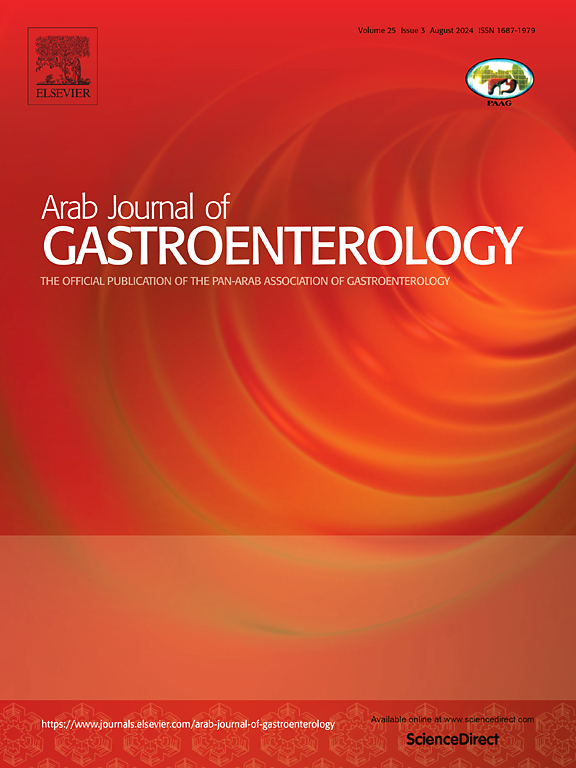未接种HBV疫苗的医护人员中HBV和HCV感染流行率和潜在危险因素:2021-2022年埃及癌症中心的一项研究
IF 1.1
4区 医学
Q4 GASTROENTEROLOGY & HEPATOLOGY
引用次数: 0
摘要
背景和研究目的:南埃及癌症研究所(SECI)是上埃及最大的肿瘤大学医院。由于免疫功能受损,乙肝病毒和丙肝病毒是癌症患者中最重要的病毒感染。医院感染是这些病毒感染的最重要来源之一。然而,最近还没有对处理肿瘤患者的卫生保健工作者(HCWs)中HBV和HCV感染流行率的估计以及HCV基因型的确定进行调查。方法:本研究包括对日常工作中直接接触血液的卫生保健工作者进行调查。对505名员工进行HCV/Ab、HBsAg和抗hbc IgM检测,对HCV阳性人员进行RT-PCR检测。结果:HCV的患病率为7.5%,年轻年龄组明显下降;HBV的患病率为2.0%。结论:HCV感染率明显下降,HBV感染率相对较低,说明近年来卫生保健领域感染控制措施的有效性。本文章由计算机程序翻译,如有差异,请以英文原文为准。
The prevalence of infection and potential risk factors for HBV and HCV among healthcare workers not vaccinated against HBV: A study from a cancer center in Egypt, 2021–2022
Background and study aim
South Egypt Cancer Institute (SECI) is the largest oncology university hospital in Upper Egypt. HBV and HCV are amongst the most important viral infections in cancer patients due to their impaired immunity. Nosocomial infection is among the most important sources of infections of these viruses. However, estimation for the prevalence of HBV and HCV infections among healthcare workers (HCWs) dealing with oncology patients as well as identifying HCV genotypes have not been recently investigated.
Methods
The study consisted of a survey of HCWs in direct contact with blood as a part of their daily work. HCV/Ab, HBsAg and anti-HBc IgM were detected in 505 employees, RT-PCR was performed on HCV-positive persons.
Results
Prevalence was 7.5 % for HCV with marked drop in younger age group and 2.0 % for HBV. The age groups affected were mostly from 30 to < 40 for HBV and ≥ 50 years for HCV. Three-quarters of anti-HCV-positive were also positive by RT-PCR. Males had significantly more HBV infections than females. Gender didn’t affect the rates of HCV infection. HCV genotyping was determined in 20 HCWs who were positive for HCV-RNA. Except for only one, all infections were HCV genotype 4. The commonest place for exposure to HCV was the pediatric inpatient wards (14.3 %), while operation rooms and adult inpatient wards were the highest exposure places for HBV (5.1 % and 2.6 %, respectively).
Conclusions
The marked drop in the prevalence of HCV infection, as well as the relatively lower prevalence of HBV infection among HCWs provides evidence for the effectiveness of infection control measures applied in healthcare over the past few years.
求助全文
通过发布文献求助,成功后即可免费获取论文全文。
去求助
来源期刊

Arab Journal of Gastroenterology
Medicine-Gastroenterology
CiteScore
2.70
自引率
0.00%
发文量
52
期刊介绍:
Arab Journal of Gastroenterology (AJG) publishes different studies related to the digestive system. It aims to be the foremost scientific peer reviewed journal encompassing diverse studies related to the digestive system and its disorders, and serving the Pan-Arab and wider community working on gastrointestinal disorders.
 求助内容:
求助内容: 应助结果提醒方式:
应助结果提醒方式:


